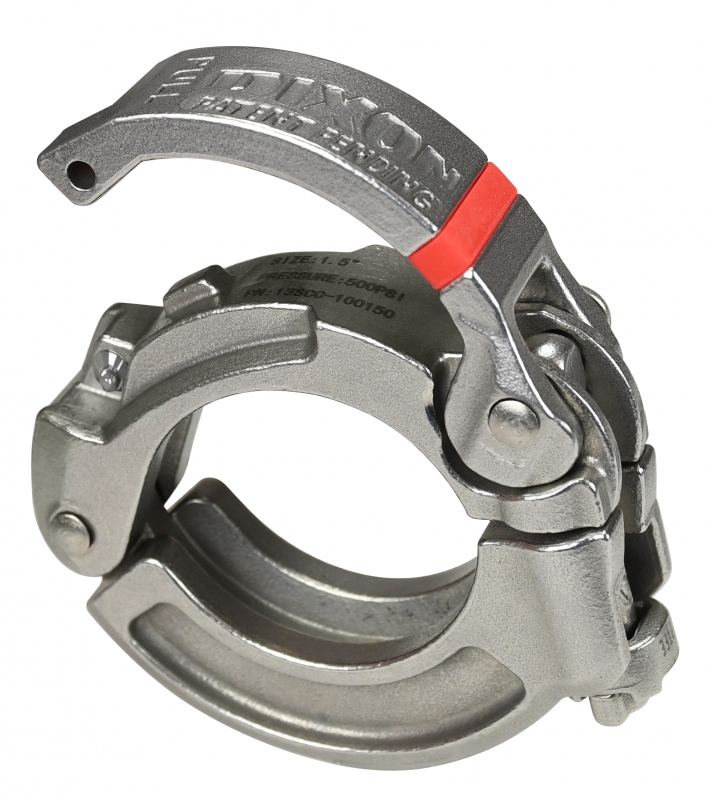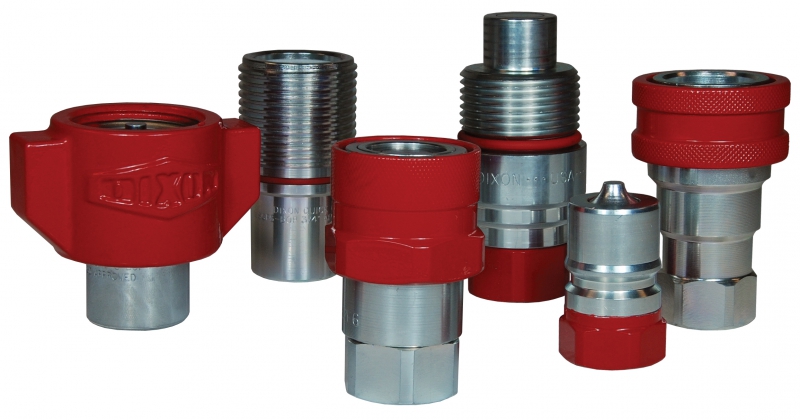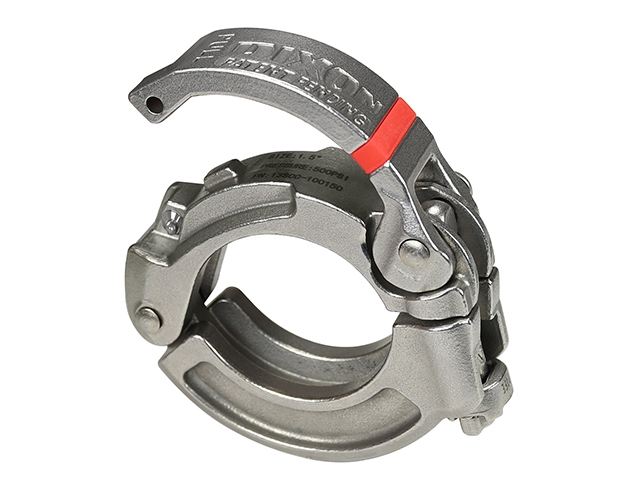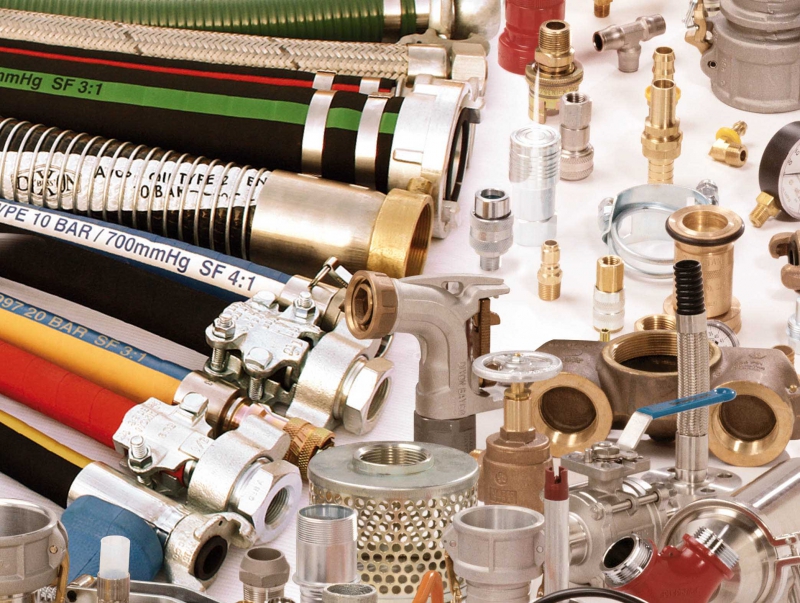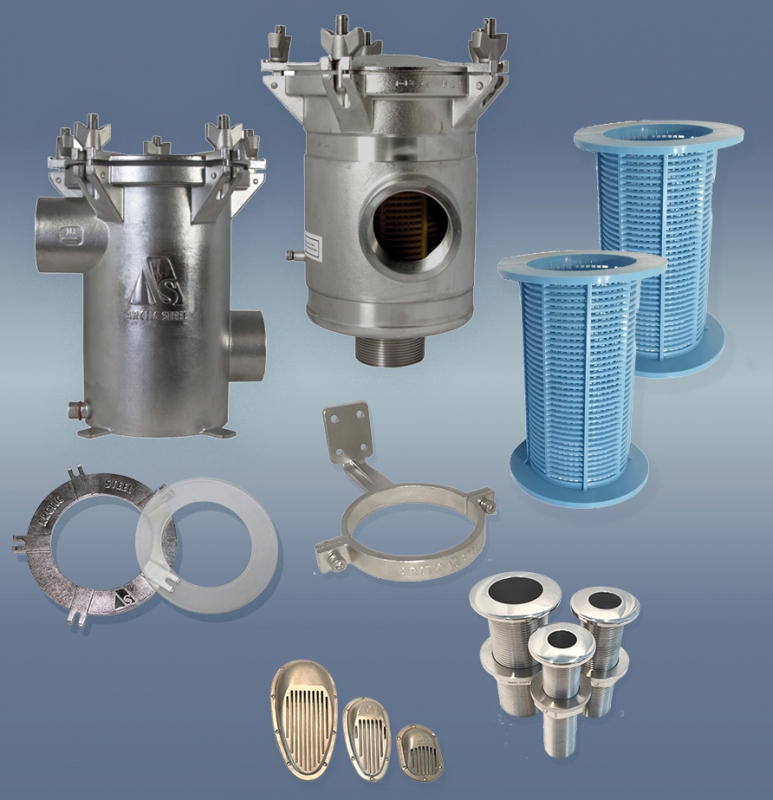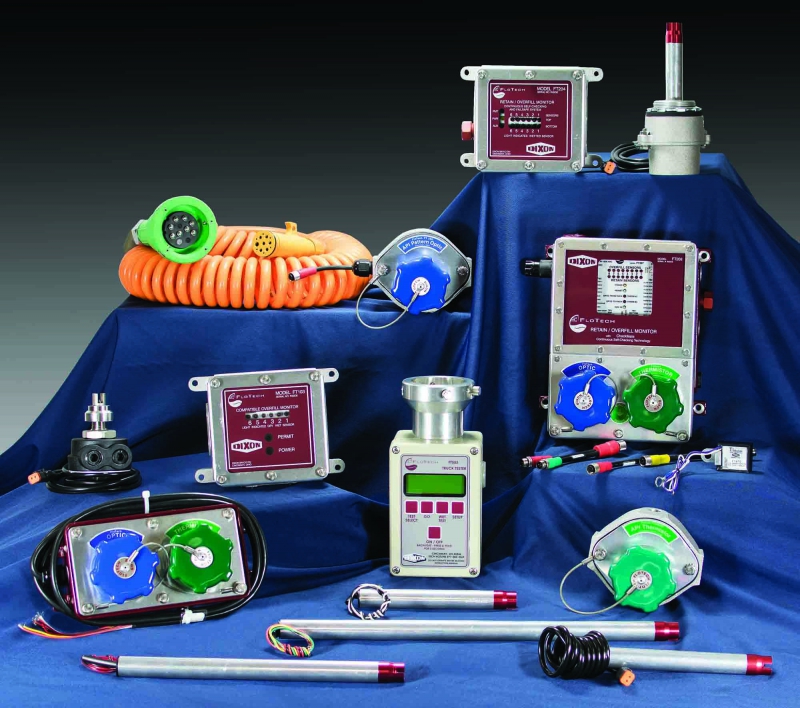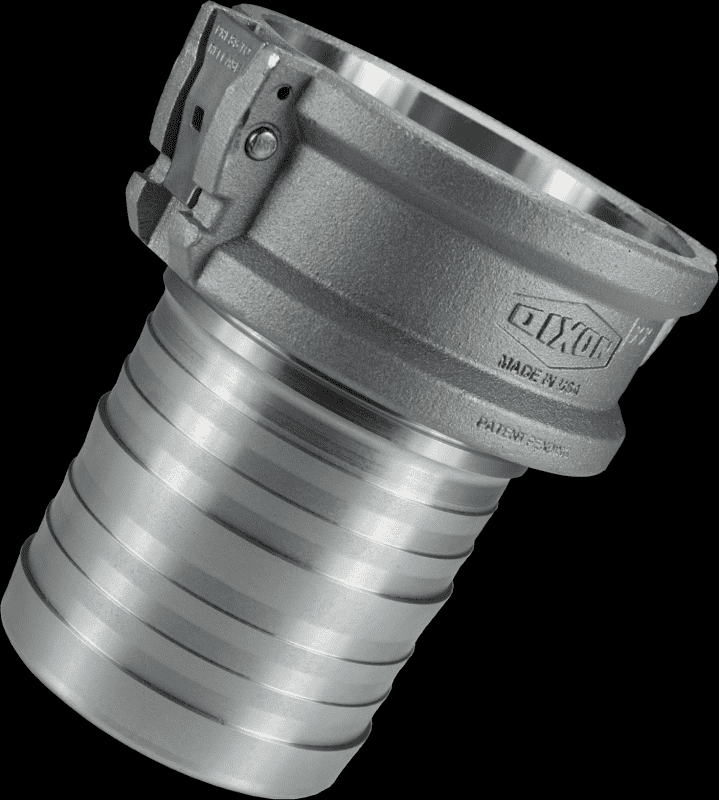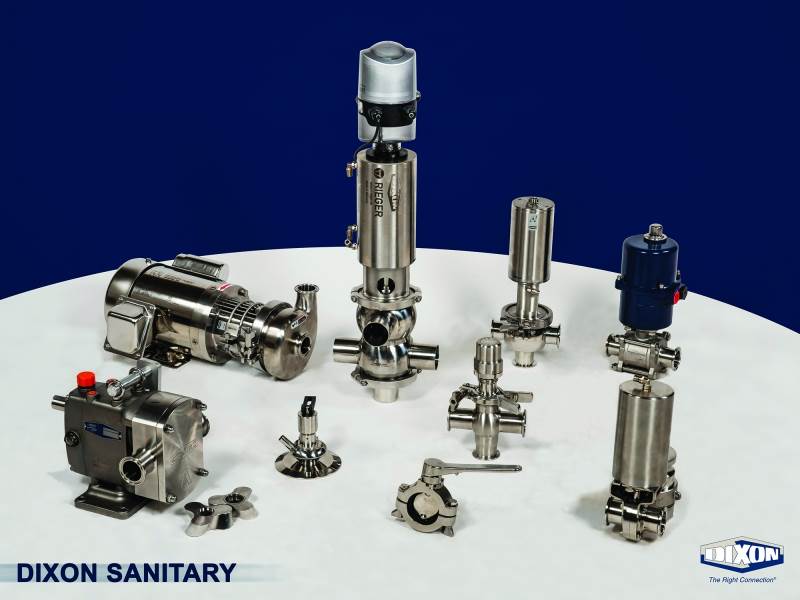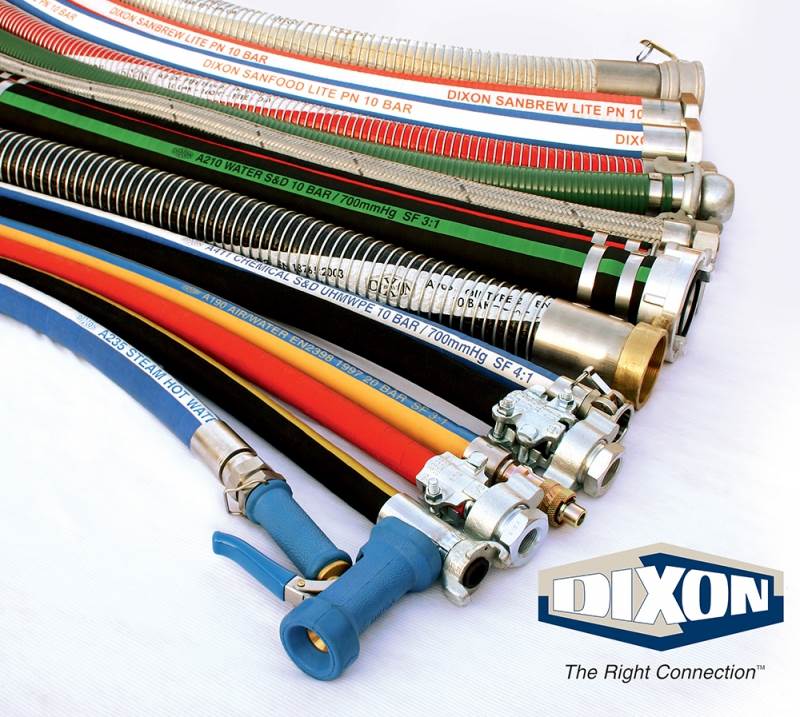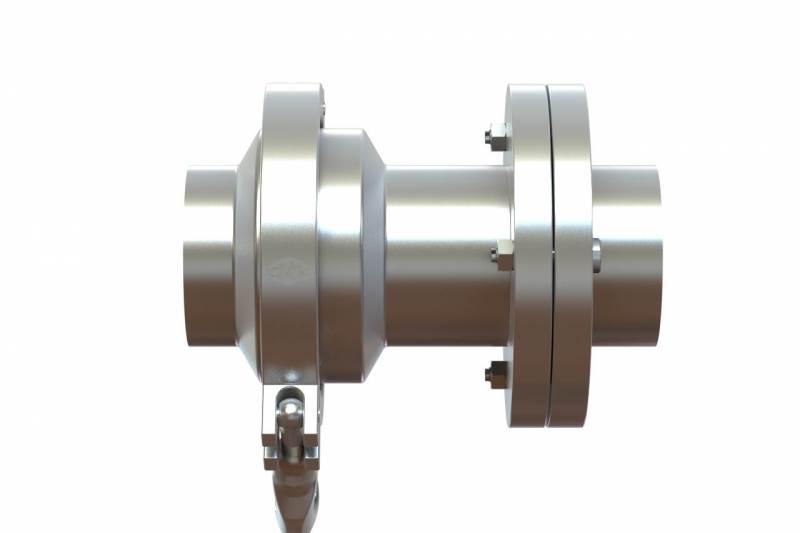- Contact 0870 350 7767
- |
- Advertise
Weighing the benefits of a loading arm over traditional hose assemblies
 News and PR from Dixon Group Europe Ltd - Published 15 September 2020
Dixon’s loading arms are engineered for long life performance as well as ease of use in the field and can be used to overcome some of the typical issues faced in the transfer of liquid
News and PR from Dixon Group Europe Ltd - Published 15 September 2020
Dixon’s loading arms are engineered for long life performance as well as ease of use in the field and can be used to overcome some of the typical issues faced in the transfer of liquidLoading arms are becoming the standard choice over hoses for certain applications in refineries, chemical plants, food & beverage processing plants, rail terminals and truck terminals. There are many variables involved in making the decision to purchase a loading arm. They can be based on application, material, location, site limitations, etc. Safety should always be considered first when protecting your most important asset, your employees. Is a loading arm actually a safer option than a standard hose assembly? It is important to review key factors and examine the impact on safety when looking to make a choice between the two.
Weight & the benefits of a counter balance
What is the media that is being transferred? Is the weight of the hose an issue? A 4 inch hose assembly filled with liquid could potentially weigh 6kg per metre. In this situation you could be asking your employees to drag a 100kg, 6 metre hose assembly. This could contribute to a high potential for back injuries and worker compensation injury claims. Even if the hose was shorter it would still add a significant amount of strain and stress on the worker. Switching this application to a loading arm would reduce the chance of an injury tremendously. The counterbalance mechanism of a loading arm is designed to balance the weight and do the heavy lifting for you and, combined with a handle, it becomes a very ergonomic solution.
The design of the Dixon loading arm incorporates an additional safety factor by having a steel housing for the Counterbalance torsion spring rather than the conventional plastic housing for better durability and long life performance. The unique counterbalance adjustment mechanism allows the torsion spring to be safely adjusted easily and quickly without having to remove the housing.
While not intended for adjustment under load the Dixon design allows for this once the weight of the arm is supported by simply turning the adjustment bolt to increase or reduce the tension on the spring.
Repetitive Tasks
Are the tasks being performed repetitive? A loading arm will be mounted and have a distinct range of motion. A hose can be maneuvered more flexibly, although this movement is typically done by having an employee drag the hose around manually. If the location of the connection point involves consistent location, such as at a fuel terminal, a loading arm application would be the best choice. This application will last longer than a standard hose assembly due to the loading arm being suspended where it can not drag on the ground like a hose can. Many times a hose that is used on a consistent basis can only last weeks or months while a lo
Other announcements from Dixon Group Europe Ltd
-
Utility Hoses in Refineries
Oil refineries are essential to the petroleum industry's downstream sector. Dixon, a well-known supplier of fluid transfer products, provides a broad range of products for the oil and gas industry.
24 Oct 2023
-
Enhancing Site Safety with King Safety Cables to Prevent Hose Whip
King safety cables offer an effective solution to prevent hose whip in the event of accidental separation of a coupling or clamp device
24 Oct 2023
-
The Importance of Proper Hygiene in Manufacturing: Dixon's Innovative Clever Cla
With its innovative design and easy-to-use features, it's no surprise that the Clever Clamp has been tried and approved at a number of food processing plants within the UK.
24 Oct 2023
-
Blowout Preventer Couplings: Components of Oil and Gas Drilling Rigs
Have you ever forgotten to secure the lid on a blender before blending a smoothie or milkshake? Though inconvenient, this mistake pales in comparison to a blowout on an oil or gas drilling rig, which
24 Oct 2023
-
Hose Connect: Asset Integrity Management Services
Dixon Hose Connect is ‘the right connection’ to ensure your business can optimise workflow and downtime, saving time and revenue; giving full visibility and paperless control over asset registration,
24 Oct 2023
-
-
Offering the Right Connection
Dixon has been building a credible reputation for over 100 years, demonstrating that it's a responsible manufacturer producing and supplying safe, reliable and long lasting products.
15 Sep 2020
-
Marine Accessories Offers Superior Performance
Dixon has a specialised range of Marine products focusing on unique quality, performance, longevity and operational efficiency.
15 Sep 2020
-
Process Equipment – Making the Right Connection
Finding the most effective fluid transfer solutions can have many benefits for maximising return on investment by improving best practice
15 Sep 2020
-
Innovations in Fuel Distribution
Dixon now offer a full range of Fuel Distribution products for use in the downstream market including fuel terminal, fuel depots and skid units where safety, ease of use and efficiency are key factors
15 Sep 2020
-
Dixon Introduces new EZLINK™ Armless Cam & Groove
A new push-to-connect positive locking system and low-profile design dramatically improves the ability to easily transfer and unload fuels, water and other liquids.
16 Aug 2018
-
Dixon –The Right Connection for Hygienic Hose, Valves & Fittings
Dixon, leading supplier of hoses, fittings, valves and accessories offers an extensive range of hygienic process equipment for the food, dairy, beverage and brewery industries including FDA and 3A approved stainless steel fittings, unions, tube, pumps, hose assemblies and valves.
19 Feb 2018
-
Hose Assemblies, Fittings & Valves backed by 100 years of innovation
It’s not every year a company can celebrate 100 years of business so Dixon are proud to be celebrating their centenary.
22 Feb 2017
-
This Hose or That Hose
Industrial hose, in general, is capable of many uses. They convey air, steam, water, beverages, chemicals and an almost unlimited assortment of other products from A to B. Sometimes transported substa
01 Jul 2016
-
A DIXON SOLUTION TO SAVE PIPEWORK AND PRODUCT
Dixon Europe are pleased to be launching a new product, the Dixon Hygienic Breakaway Check Valve, which is proving to be ‘the right connection’, potentially saving companies thousands.
01 Jul 2016





